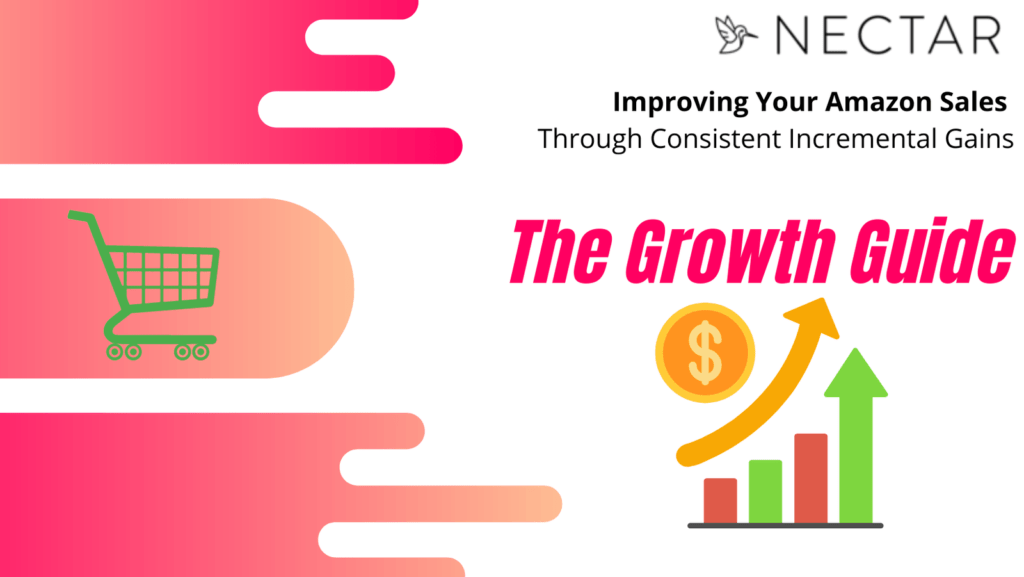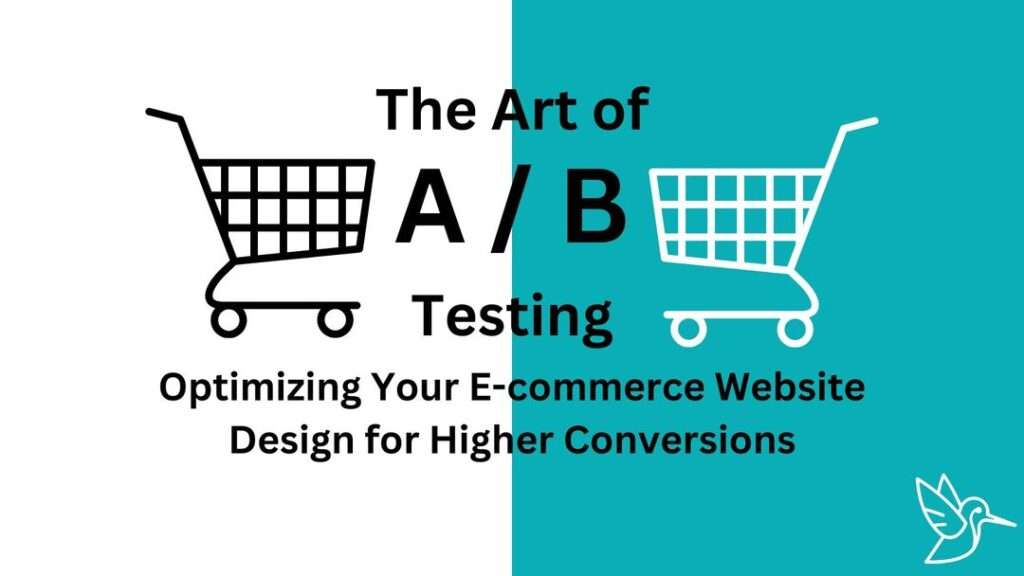On Amazon, driving sales requires a strategic approach that addresses various aspects of your product’s visibility and appeal. Incremental improvements in areas like SEO, ads, product listings, comparison charts, and subscribe-and-save programs can collectively make a giant difference. To increase sales you can increase the number of people seeing and visiting your products, improve how many of the people that visit actually buy your products, and implement strategies to increase average order value, number of purchases and items per customer, and overall customer lifetime value.
Let’s delve into the key methods for increasing sales and demonstrate their cumulative effects with a hypothetical equation, along with a view over a month of how those numbers would be affected with each incremental change. We’ll provide actionable strategies for each area to help you implement these improvements immediately.
1. Optimize SEO for Increased Visibility
The Impact: Optimizing your product’s SEO (Search Engine Optimization) means more people will see your product in search results, leading to higher impressions.
Example: Imagine your product gets 1,000 impressions a day with a conversion rate of 2%. If your SEO improvements lead to a 20% increase in impressions, you’ll now get 1,200 impressions a day.
Hypothetical Equation:
New Impressions = Current Impressions * (1 + SEO Improvement)
New Impressions = 1000 * 1.20 = 1200
Strategy: Actionable Steps to Improve SEO
- Keyword Research: Use tools like Helium 10 or Jungle Scout to find high-traffic keywords relevant to your product.
- Backend Keywords: Ensure all relevant keywords are included in your product’s backend search terms.
- Title Optimization: Craft a compelling, keyword-rich title. Include primary keywords at the beginning.
- Bullet Points and Description: Integrate secondary keywords naturally into bullet points and product descriptions.
- Enhanced Brand Content (EBC): Use EBC to improve your product description with rich media, making it more engaging and informative.
Win example: Improving sales with JUST SEO.
2. Enhance Ad Campaigns to Boost Click-Through Rate (CTR)
The Impact: Optimizing your ads increases your CTR, meaning more people click on your product.
Example: With a CTR of 5%, 50 clicks from 1,000 impressions, optimizing your ads to improve CTR by 30% increases your CTR to 6.5%.
The Numbers:
New CTR = Current CTR * (1 + Ad Optimization)
New CTR = 0.05 * 1.30 = 0.065
New Clicks = New Impressions * New CTR
New Clicks = 1200 * 0.065 = 78
Strategy: Actionable Steps to Improve Ad Campaigns
- Targeting: Refine targeting by focusing on high-performing keywords and excluding underperforming ones.
- Ad Creative: Write clear, compelling ad copy that highlights unique selling points and includes a strong call to action. Additionally make sure your ad images are amazing. Video has been shown to increase CTR at huge rates. For instance, we found that sponsored brand video campaigns have a minimum 238% CTR than other campaign and media types.
- Bid Optimization: Adjust bids based on performance data. Increase bids for high-converting keywords.
- A/B Testing: Regularly test different ad variations to see which ones perform best.
- Use Negative Keywords: Add negative keywords to prevent your ads from showing on irrelevant searches.
Win example: Full-funnel tactics in an inventory emergency.
3. Improve Product Listings for Higher Conversion Rates
The Impact: Optimizing your product listing (PDP, content, images, etc.) increases the conversion rate from clicks to purchases.
Example: If your conversion rate is 2%, optimizing your listing to increase the conversion rate by 50% raises it to 3%.
The Numbers:
New Conversion Rate = Current Conversion Rate * (1 + Listing Optimization)
New Conversion Rate = 0.02 * 1.50 = 0.03
New Sales = New Clicks * New Conversion Rate
New Sales = 78 * 0.03 = 2.34 ≈ 2
Strategy: Actionable Steps to Improve Product Listings
- High-Quality Images: Use professional, high-resolution images showing the product from multiple angles.
- Detailed Descriptions: Write thorough, informative product descriptions highlighting features and benefits.
- Enhanced A+ Content: Utilize A+ Content to add enhanced images, comparison charts, and additional text.
- Customer Reviews: Encourage satisfied customers to leave reviews and address any negative feedback promptly.
- Pricing: Ensure your pricing is competitive by regularly monitoring competitor prices and adjusting accordingly.
Win example: Going from an online catalog to a beautiful shopping experience.
4. Optimize Comparison Charts and Complementary Items
The Impact: Enhancing comparison charts and displaying complementary items can increase the average order value (AOV) and the number of items sold per transaction.
Example: If your average order value is $30 and optimizing these elements increases it by 20%, your new AOV becomes $36.
The Numbers:
New AOV = Current AOV * (1 + AOV Improvement)
New AOV = 30 * 1.20 = 36
Strategy: Actionable Steps to Optimize Comparison Charts and Complementary Items
- Comparison Charts: Create detailed comparison charts highlighting the benefits of your product versus competitors.
- Bundling: Offer product bundles to encourage customers to purchase complementary items together.
- Cross-Selling: Use the “Frequently Bought Together” and “Customers Who Bought This Also Bought” sections effectively.
- Promotions: Run promotions or discounts on complementary items to incentivize higher order values.
- Upselling: Suggest higher-end versions of the product or related accessories during the checkout process.
Win example: Complimentary products increasing AOV.
5. Increase Subscribe and Save Members for Higher Lifetime Value (LTV)
The Impact: Increasing the number of subscribe-and-save members boosts customer lifetime value (LTV).
Example: If the average LTV is $100, and you increase your subscribe-and-save members by 25%, the LTV increases to $125.
The Numbers:
New LTV = Current LTV * (1 + Subscribe and Save Improvement)
New LTV = 100 * 1.25 = 125
Strategy: Actionable Steps to Increase Subscribe and Save Members
- Discounts: Offer attractive discounts for customers who subscribe and save.
- Marketing: Promote the benefits of the subscribe-and-save program in your product descriptions and ads.
- Email Campaigns: Use email marketing to remind customers of the convenience and savings of subscribing.
- Incentives: Provide additional incentives, such as free gifts or exclusive offers, to subscribe-and-save members.
- Retention: Focus on customer retention by ensuring high product quality and excellent customer service.
Win example: Increasing customer lifetime value for big sales.
Cumulative Effect
To see the cumulative effect, let’s combine all these optimizations into a single scenario:
- Initial Sales: 2 per day (from the original 1,000 impressions, 5% CTR, 2% conversion rate)
- Initial AOV: $30
- Initial LTV: $100
After optimizations:
- SEO Optimization: 1,200 impressions
- Ad Optimization: 6.5% CTR = 78 clicks
- Listing Optimization: 3% conversion rate = 2.34 ≈ 2 sales per day (maintained for simplicity)
- AOV Improvement: $36
- LTV Improvement: $125
New Daily Revenue:
New Daily Revenue = New Daily Sales * New AOV
New Daily Revenue = 2 * 36 = 72 dollars
New LTV:
New LTV = 2 * 125 = 250 dollars per day
Monthly Impact:
- Initial Monthly Sales: 2 sales/day * 30 days = 60 sales
- Initial Monthly Revenue: 60 sales * $30 AOV = $1,800
- Initial Monthly LTV: 60 sales * $100 LTV = $6,000
- New Monthly Sales: 2 sales/day * 30 days = 60 sales (maintained for simplicity)
- New Monthly Revenue: 60 sales * $36 AOV = $2,160
- New Monthly LTV: 60 sales * $125 LTV = $7,500
Percentage Increase in Sales:
- Monthly Revenue Increase: ((2160 – 1800) / 1800) * 100 = 20%
- Monthly LTV Increase: ((7500 – 6000) / 6000) * 100 = 25%
By systematically optimizing each component, you can significantly boost both daily revenue and customer lifetime value. These improvements illustrate the power of a comprehensive approach to increasing sales on Amazon, where each adjustment not only enhances a specific metric but also contributes to a cumulative growth effect.
Conclusion
Maximizing sales on Amazon is a multifaceted process that requires attention to incremental opportunities for improvement in both your backend (SEO, keyword research, ad strategy, catalog and inventory management) and front end (content, optimized listings, comparison charts). Create systems that allow for iterations based on solid prioritization and order of impact.





